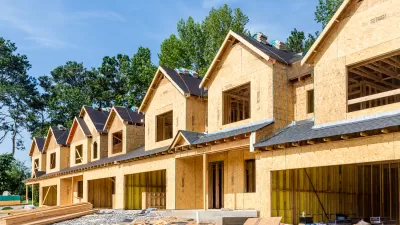The Great Recession spiked the amount of young adults (aged 25-34) living in multi-generational housing, which has now surpassed the share of oldest adults (age 85+) living in these types of household structures.
The notorious "in-law unit" is no longer just for the oldest share of adults in this country. Indeed, per the 2012 U.S. Census, 23.6 percent of young adults live in multi-generational housing, as compared to 22.7 percent of the oldest adults. According to Richard Fry and Jeffrey Passel of the Pew Research Center, this amount has steadily risen over the past three decades, "up from 18.7% in 2007 and 11% in 1980."
Fry and Passel explain that this trend might manifest from young adult's, "delayed entry into adulthood. Previous Pew Research Center studies have shown that young adults are marrying at later ages and staying in school longer." In addition,"the declining employment and wages of less-educated young adults may be undercutting their capacity to live independently of their parents."
Overall, an astounding, "57 million Americans, or 18.1% of the population of the United States, lived in multi-generational family households in 2012, double the number who lived in such households in 1980." This illustrates the shifting demand of the American population for housing stock that allows multi-generational living.
FULL STORY: In Post-Recession Era, Young Adults Drive Continuing Rise in Multi-Generational Living

Pennsylvania Mall Conversion Bill Passes House
If passed, the bill would promote the adaptive reuse of defunct commercial buildings.

Planning for Accessibility: Proximity is More Important than Mobility
Accessibility-based planning minimizes the distance that people must travel to reach desired services and activities. Measured this way, increased density can provide more total benefits than increased speeds.

Fair Housing Cannot Take a Back Seat to ‘Build, Baby, Build’
If we overlook fair housing principles in the plan to build US housing back better, we risk ending up right back where we started.

LA Metro Board Approves New 710 Freeway Plan
The newest plan for the 710 corridor claims it will not displace any residents.

Austin’s Proposed EV Charging Rules Regulate Station Locations, Size
City planners say the new rules would ensure an efficient distribution of charging infrastructure across the city and prevent an overconcentration in residential areas.

Making California State Parks More Climate-Resilient
A recently released report offers recommendations for keeping state parks healthy and robust, including acquiring additional land for conservation and recreation.
City of Costa Mesa
Licking County
Barrett Planning Group LLC
HUD's Office of Policy Development and Research
Mpact Transit + Community
HUD's Office of Policy Development and Research
Tufts University, Department of Urban and Environmental Policy & Planning
City of Universal City TX
ULI Northwest Arkansas
Urban Design for Planners 1: Software Tools
This six-course series explores essential urban design concepts using open source software and equips planners with the tools they need to participate fully in the urban design process.
Planning for Universal Design
Learn the tools for implementing Universal Design in planning regulations.























